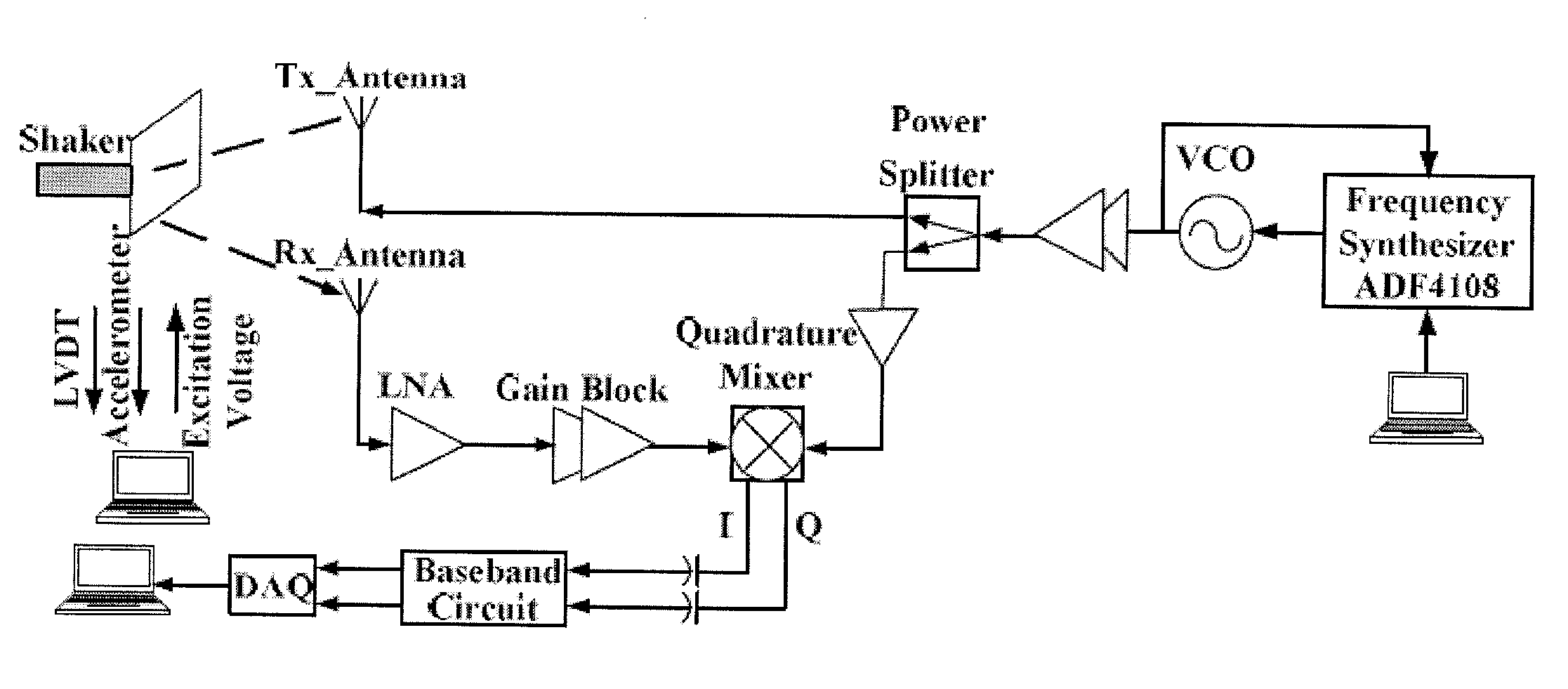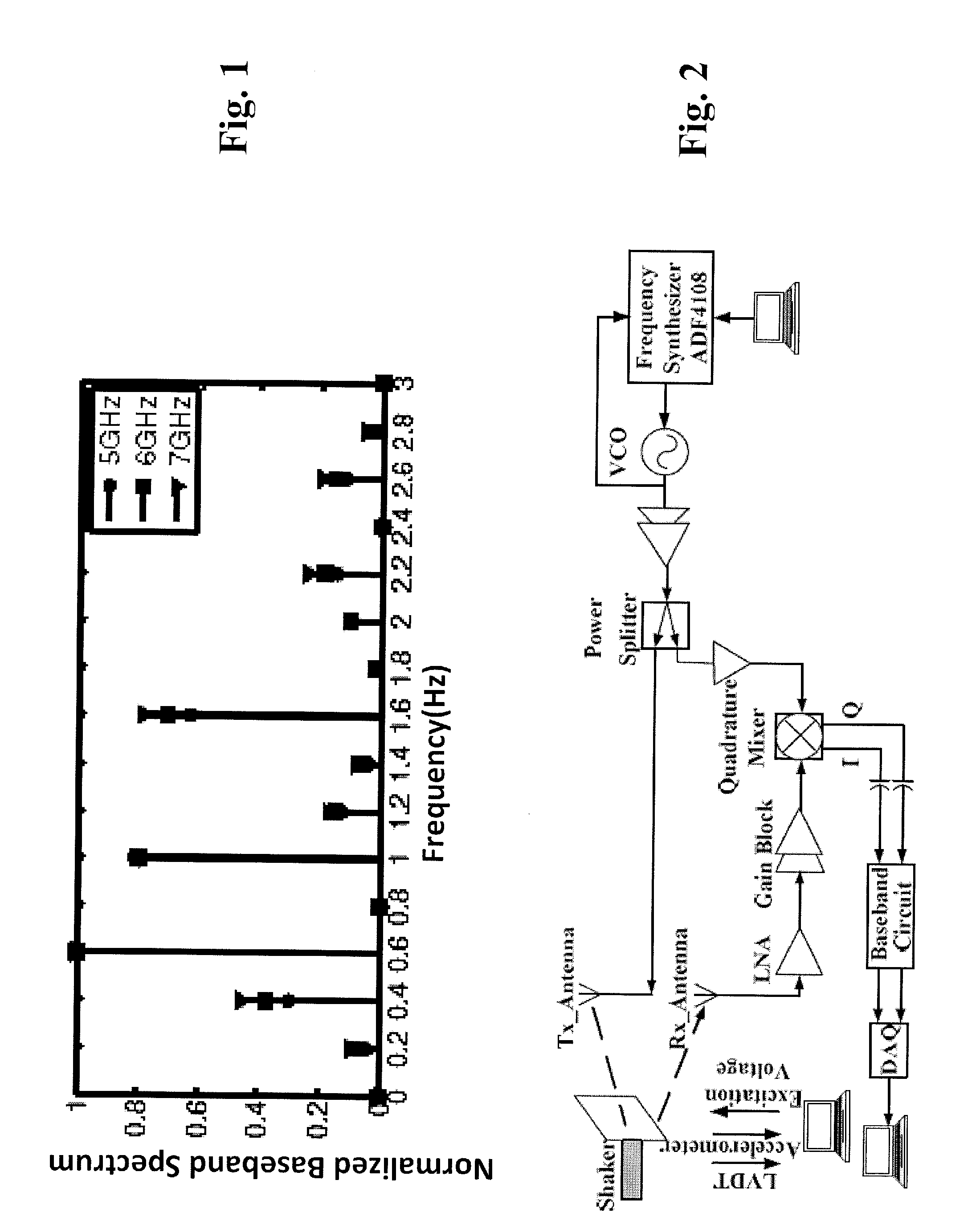Wavelength division sensing RF vibrometer for accurate measurement of complex vibrations
a vibration sensor and vibration technology, applied in specific gravity measurement, instruments, furnaces, etc., can solve the problems of limited radar, low-velocity movement measurement, and system only detecting the frequency of movement, so as to achieve low sampling rate and high accuracy
- Summary
- Abstract
- Description
- Claims
- Application Information
AI Technical Summary
Benefits of technology
Problems solved by technology
Method used
Image
Examples
experimental verification
[0110]VI. Experimental Verification
[0111]In this section, experimental results of an embodiment of a wavelength division sensing RF vibrometer in accordance with the subject invention is provided. The results are first evaluated through harmonic analysis. The improvement of detection accuracy by using embodiments of the subject method that uses multiple harmonic ratios will then be verified.
[0112]When measuring a vibration that includes three harmonic motions with m1=2.54, m2=1.896, and m3=0.97, as determined above using the curve fitting toolbox of Matlab™, the reference movement pattern of the vibration is:
x(t)=2.54 sin(2π·4·t)+1.896 sin(2π·6·t)+0.97 sin(2π·8·t) (17)
[0113]FIG. 4B is the measured baseband spectrum at 6 GHz. The harmonic amplitude ratio H2 / H10 was chosen with no specific reason. The amplitude of harmonics on the baseband spectrum can be represented as:
Hx=∑k=-∞∞∑I=-∞∞…∑p=-∞∞Jk(4πm1λ)Jl(4πm2λ)Jp(4πm3λ)(18)
[0114]With the constraint condition 4k+6l±8p=x. Since the Bess...
PUM
 Login to View More
Login to View More Abstract
Description
Claims
Application Information
 Login to View More
Login to View More - R&D
- Intellectual Property
- Life Sciences
- Materials
- Tech Scout
- Unparalleled Data Quality
- Higher Quality Content
- 60% Fewer Hallucinations
Browse by: Latest US Patents, China's latest patents, Technical Efficacy Thesaurus, Application Domain, Technology Topic, Popular Technical Reports.
© 2025 PatSnap. All rights reserved.Legal|Privacy policy|Modern Slavery Act Transparency Statement|Sitemap|About US| Contact US: help@patsnap.com



